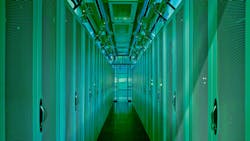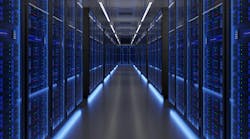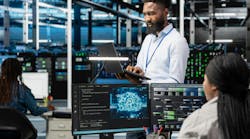HPE’s $14 Billion Acquisition of Juniper Networks Resets the Field for AI-Driven Networking
Hewlett Packard Enterprise’s (HPE) acquisition of AI-focused Juniper Networks for about $14 billion in cash represents a significant shift in the networking and AI technology landscape, giving HPE a significantly expanded set of tools and products to go head-to-head with top-tier networking vendors, such as perennial market leader Cisco.
With the growth of its existing Aruba networking business, adding Juniper to the mix strengthens HPE’s networking portfolio in a high-margin space, for a positive bottom-line impact, while adding the experience and technology from Juniper in the data center and service provider business.
Antonio Neri, CEO of HPE, said about the acquisition, "This transaction will strengthen HPE’s position at the nexus of accelerating macro-AI trends, expands our total addressable market, and drives further innovation for customers as we help bridge the AI-native and cloud-native worlds."
In a company blog posted after the acquisition announcement, Rami Rahim, CEO of Juniper Networks, highlighted Juniper’s long-term commitment to AI integration:
“Seven years ago, Juniper started taking steps to capture the opportunity. With leading AIOps, we reduced manual work, sped deployments and crushed time-consuming trouble tickets for our customers.
We have shifted the perception of what a network can and should be – and have seen great success. In fact, revenue from our products that leverage this AI have grown nearly 100% year-over-year for the last two reported quarters.
And we’re starting to see early momentum from our investments in enabling and automating AI data centers, including those handling emerging AI training and inference models.”
The Acquisition's Impact on HPE
As HPE makes a concerted effort to become a services-focused company with HPE Greenlake and its consumption-based IT model leading the way, the addition of the Juniper enterprise-class networking platform and its well-integrated Mist AI looks like a good fit for HPE.
Juniper, which has a strong reputation for its contributions to the internet and its most recent focus on integrating AI and networking technology, meshes well with the existing HPE portfolio of hardware and software, adding a stronger component in the areas of AI and data center networks.
The acquisition also gives HPE a leg up in addressing the demand for the integration of AI into networking to manage increasingly complex connectivity needs.
Such needs include end-to-end secure and assured connectivity, which can be accomplished by adding Juniper's Mist AI Ops to networking services such as WLAN, SD-WAN, network access control and other securely delivered cloud services - including technologies previously identified as critical by HPE such as SASE and Zero Trust architectures.
The acquisition also affords HPE a differentiated network-as-a-service (NaaS) offering through integrating HPE GreenLake with the AI capabilities of Juniper’s Mist. Via such means, customers will be in a unique position to deliver comprehensive, easy-to-deploy, NaaS across their enterprises.
Gearing Up for the AI Data Center and End-to-End WAN
It’s impossible to overestimate the importance of the AI-driven data center to the future of the data center industry and data center operations.
Toward this end, HPE already has a leading reputation in the development and deployment of business-class high-performance computing, as well as sitting at the top of the Supercomputer 500 ranking with the Aurora and Frontier supercomputers at Oak Ridge and Argonne National Laboratories
Quoting Juniper's Rahim directly, he identified the advantages he believe this positioning brings to the future of the Juniper solutions for the AI data center.
“By combining with our intent-based automation solution Apstra that has already been simplifying customers’ data center operations around the world, and our QFX switches and PTX series routers, we will be positioned to be a pioneer in the development of a comprehensive solution for customers building AI data centers," said Rahim.
Finally, in the area of end-to-end Wide Area Networking, we note that Juniper has an existing portfolio and significant experience as in deploying automated networks across the core, edge, and metro, while assuring experiences.
Therefore, adding the hardware and software available from HPE and Aruba stands to expand the opportunities for the new partners' existing customer base.
Impact on the Customer
While the combination of the two companies has the potential to be a disruptive influence in the space occupied by HPE and Juniper, a lot is going to depend on how well the two companies can integrate their offerings.
It will also depend on how long it takes for the two businesses to fully integrate - a process that is currently expected to take until late 2024 or early 2025.
Integrating the Mist AI capabilities with the existing HPE data center and networking hardware clearly will provide a boost to those products.
However, the overall impact of the merger can’t be determined until we see the cojoined enterprises deploying into customer data centers.
Appearing this month on Bloomberg Technology, Hewlett Packard Enterprise CEO Antonio Neri said HPE agreeing to buy Juniper Networks for $14 billion -- in a move that will expand its presence in networking but raised skepticism from Wall Street -- brings his company "complementary capabilities we didn't have across the networking portfolio." The deal is expected to close late this year or in early 2025.
Keep pace with the fast-moving world of data centers and cloud computing by connecting with Data Center Frontier on LinkedIn, following us on X/Twitter and Facebook, and signing up for our weekly newsletters using the form below.
About the Author



